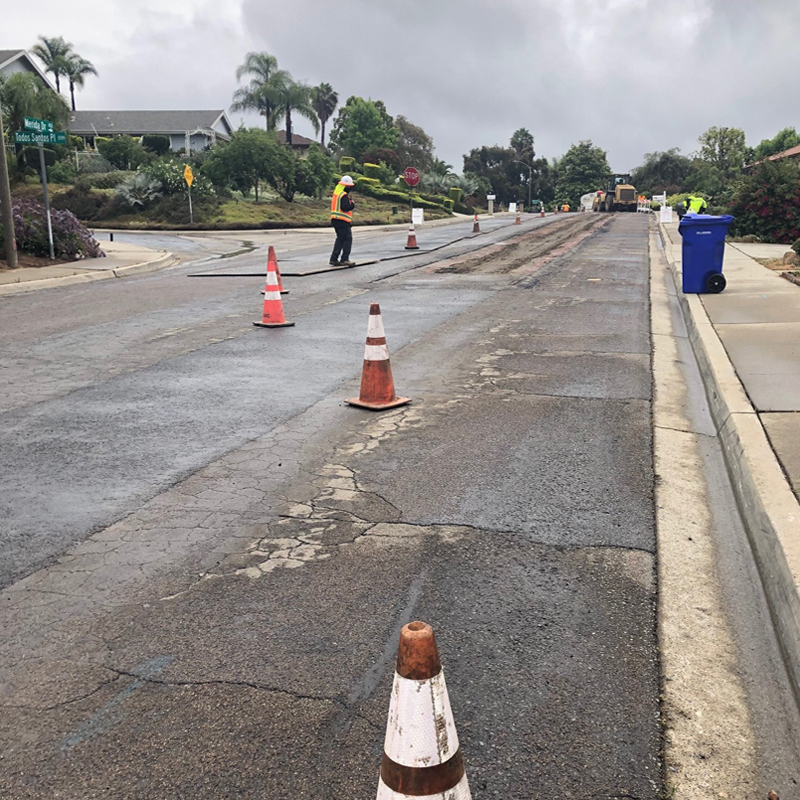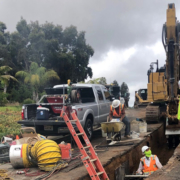As a result of the coronavirus pandemic, public agencies have found creative solutions to holding meetings in compliance with the State of California’s meeting laws. Recently, Fallbrook Public Utility District board members stepped away from their video screens, using the opportunity to take a field trip to view a new project while conducting a traveling board meeting.
The Santa Margarita River Conjunctive Use Project is a joint project with Marine Corps Base Camp Pendleton, and will eventually supply about 30% of the District’s water, and virtually all of Camp Pendleton’s water.
Fallbrook PUD board members view construction project

Construction of the first section of pipeline on Merida Drive is part of the Santa Margarita River Conjunctive Use Project. This segment of pipeline between Alturas and Mission roads is about 4,500 linear feet and is 35% installed. Photo: Fallbrook Public Utility District
At the time of the tour, the project had been under construction for 250 days. Due to COVID-19 and social distancing restrictions, board members and others who attended the traveling meeting stayed in their cars. While behind the wheel, board members wove through parts of Fallbrook to follow the path of the new pipeline. With their smartphones turned on and hands-free, representatives followed each other in a single file parade while listening to a live conference call with the project contractor. Board members learned about construction progress, and saw where and how the pipe will be installed.
The tour and the project began at the treatment plant on Alturas Road, where bulldozers and heavy machinery are moving earth to build the pipeline and a water treatment plant. The pipeline will transport water from the plant through parts of central Fallbrook, ending at McDonald Road. The project also includes a new four million-gallon storage tank, where the tour ended. Participants discussed the possibility of a subsequent tour to view ongoing progress with construction of the facilities.
The entire construction process will take approximately two years to complete, with the pipeline becoming fully operational by 2022.




